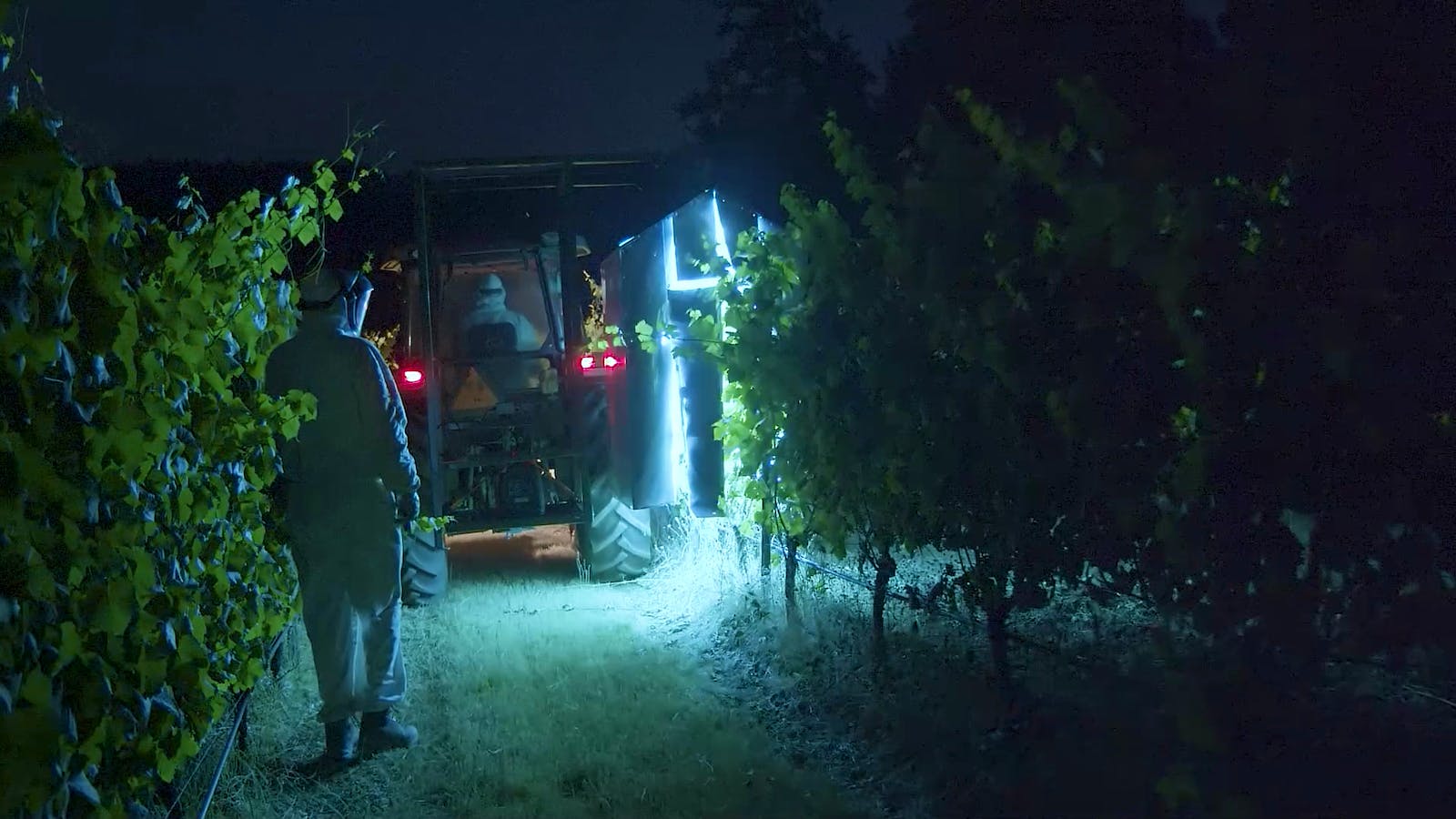
Jim Bernau, founder of Willamette Valley Vineyards, was installing an ultraviolet light component to his HVAC system in the winery, offices and tasting rooms to protect both staff and customers against COVID-19 when inspiration struck. “The light bulb went off when we started researching the UV light to kill COVID,” said Bernau. “It reminded me of the research I’d been reading about for years on using UV light to kill pathogens in the vineyard.”
Bernau, like most organic and sustainable growers, uses organic sulphur to control powdery mildew in his Oregon vineyards. Many other vintners employ chemical fungicides. According to the Robert Mondavi Institute Center for Wine Economics at U.C. Davis, powdery mildew currently accounts for an estimated 74 percent of total pesticide applications by California grapegrowers. The fungicides are costly and environmentally unfriendly, plus the fungus typically adapts to the fungicides within a few generations, requiring heavier applications or changing formulas.
An international consortium of scientists known as the Light and Plant Health Project, led by David Gadoury, a plant pathologist at Cornell AgriTech in Geneva, N.Y., has developed an inexpensive answer. Gadoury has spent his entire career looking for ways to keep plants healthy. Although scientists have known for several years that UV light will kill bacteria, viruses and fungi, just exactly how to apply their finds in a working field or vineyard has been a challenge.
“Research in using UV light to kill the powdery mildew pathogens is not new,” Gadoury said. “But it has accelerated with the discovery that UV is much more effective when applied at night.”
Gadoury and his team have found that mounting UV lights on tractors or sending self-driving robots into the vineyards at night can scramble the mildew’s DNA and kill it faster, safely and more efficiently than costly fungicides.
UV light damages the DNA of many organisms, but mildew have developed biochemical defenses against this damage, using a repair process that requires the blue light component of sunlight. “What makes it possible for us to use UV to control these plant pathogens is that we apply it at night,” Gadoury said. “At night, the pathogens don’t receive blue light and the DNA repair mechanism isn’t working.”
Gadoury said the UV treatment requires about four hours of darkness after application for maximum effectiveness. He adds that in more than three years of trials, UV light applications have worked as well as or better than commercial fungicide applications commonly used against powdery mildew. “For Chardonnay grapes, we’ve got effective suppression of powdery mildew over a period of three years, with treatments once a week,” said Gadoury.
The team has partnered with SAGA Robotics in Norway to develop the first commercial robot fitted with UV lights. The Norwegian robots are autonomous vehicles fitted with 8 foot–by–4 foot arrays of lamps and are expected to go into commercial production later this year.
While researchers at Cornell AgriTech have been testing UV light applications in their experimental vineyards on the East Coast, Bernau has jumped at the opportunity to test UV lights in his Pinot Noir and Chardonnay vineyards in Oregon. He approached Walt Mahaffee, a USDA plant pathologist in Oregon who had been working with Gadoury, about trying the lights. He and Mahaffee decided upon a three-point rig that could be easily attached to the back of a tractor and pulled through the vineyards at night.
“Our initial assessment is that an autonomous vehicle will make UV light application far less expensive than the current seven- to 10-day application of organic sulfur via tractor and sprayer with operator,” said Bernau. “There is another significant advantage. Our spray windows vary due to the Willamette Valley’s periodic rainy and/or windy weather conditions, frustrating the best timing for applying sulfur via tractor and sprayer. The application of UV light is not restricted by weather.”
In New York state, where humidity is higher and downy mildew is also a concern, one Finger Lakes winery will be trying out the technique. Greg Taylor, director of sales at Bully Hill Vineyards in Hammondsport, N.Y., has been working with Gadoury to see if UV light can also be an effective tool for management of downy mildew in the vineyard. Taylor says planned vineyard experiments were sidelined by the COVID pandemic, but have been rescheduled for the fall.